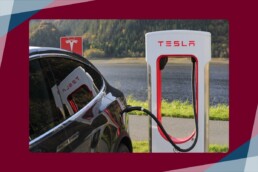Buying a Tesla? What to Consider in Your Insurance
Tesla is continuing to make waves in the auto industry at unprecedented levels. In 2020, there were over 200,000 new Teslas registered, and that number is only increasing. It’s no secret that they are popular cars.
However, there are a lot of gray areas with newer technologies, especially with EVs and insurance. Luckily, we can make it easy for you. Here’s what you need to know about Tesla insurance.
What You Need To Know About Tesla Insurance
While Tesla offers its own insurance program, most Tesla owners don’t choose to use it, so we’re primarily talking about overall insurance for your Tesla. There are some key differences that may be new to you as a first-time Tesla owner, especially if you’re switching from a normal car like a Toyota Corolla.
Much of the insurance coverage will remain the same, but there are a few key distinctions to keep in mind. Remember, they will vary from company to company, so it’s best to ask your provider for more details about your specific policy. However, here are some general guidelines.
Tesla Insurance is More Expensive
While the numbers vary, Teslas tend to be more expensive to insure.
It makes sense that because Tesla is a more expensive car brand than most vehicles on the road, it will be more expensive to insure. Most new Tesla models cost above the average cost of $45,000, making them a little more expensive to insure, as the product is more valuable.
Teslas are also classified as luxury vehicles, making them more expensive to insure as well. That it is an electric vehicle has nothing to do with the rates, in most cases. However, expect to pay over $4,500 a year for insurance, since that’s the average rate for a new Tesla model.
However, this will depend entirely on the year and model of your Tesla. A model that is a few years old will still have the right safety features but will have depreciated in value, which will probably save you some money and drop that price down even below $3,000.
Specific Coverage Is Needed
Because luxury electric vehicles are such a new and niche market, insurance companies will vary widely on their coverage and rates based on specific vehicles. That means that it’s important to sit down with your insurance provider and discuss the details of your policy to ensure that you are getting the coverage that you need.
For example, what is the most expensive part of a Tesla vehicle? The battery. Not every insurance company offers battery coverage for everything that can harm it.
Sure, your battery will be covered if it’s destroyed in a collision, but what happens if the battery gets corroded, melted, or harmed by the weather? It’s important that you determine the necessities related to your EV are covered.
EVs may also be more susceptible to water damage than other vehicles. No, the rain will not harm your Tesla, but a large enough puddle might just be the end of it.
We won’t bother mentioning why car insurance is so important, as it’s required by law in most states to have it. However, with the need for more specialized repairs, having proper coverage on your Tesla may be even more important than with most vehicles.
Do The Costs Balance Out?
Finally, let’s talk about whether buying a Tesla is worth it. Even with an average of 40% higher insurance rates, you still save a lot of money on fuel and certain other costs. So, do the costs balance out?
Well, if you drive a Tesla and have the standard commute to work, you’ll likely be saving around $2 per day or more on fuel. As gas prices continue to rise, that’s closer to $3. However, $2 a day works out to be savings of $60 a month and $730 a year.
If you do a lot of driving, let’s double that number to $4 a day or close to $1,500 a year. If your insurance rates are going to be that wide of a difference, then it may not work out in your financial favor.
You will still eliminate the need for oil changes and stopping at the gas pump frequently, and you will also drive a luxury vehicle, which isn’t meant to be cheaper. However, in this instance, the balance is far more likely to work out in your favor. This is especially true if you have a way to offset your energy like residential solar panels.
If you’re considering buying a Tesla, it’s important to weigh out the costs for your personal situation. Overall, the reduced need for maintenance, saving money on fuel, and the ability to drive a luxury vehicle certainly do balance out the costs fairly well, while also reducing your impact on the environment. The next step is to sit down with a car insurance provider and discuss the cost of coverage.
Get Covered Today!
Now that you know more about Tesla insurance, the best thing you can do is get yourself covered. There are a lot of expensive components in a Tesla and they could cost you a fortune to fix out of pocket. However, with the right plan, the costs balance out. Stay up to date with our latest insurance news and contact us to get covered!
Related Articles
The Importance of Contractual Risk Transfer in Contractor/Subcontractor Relationships
In the construction industry, managing risk is crucial for the success and sustainability of any project. Contractual risk transfer is a vital strategy…
What Are Group Captives?
Group captives are a form of captive insurance where multiple organizations from similar industries form a single insurance entity. Unlike…


